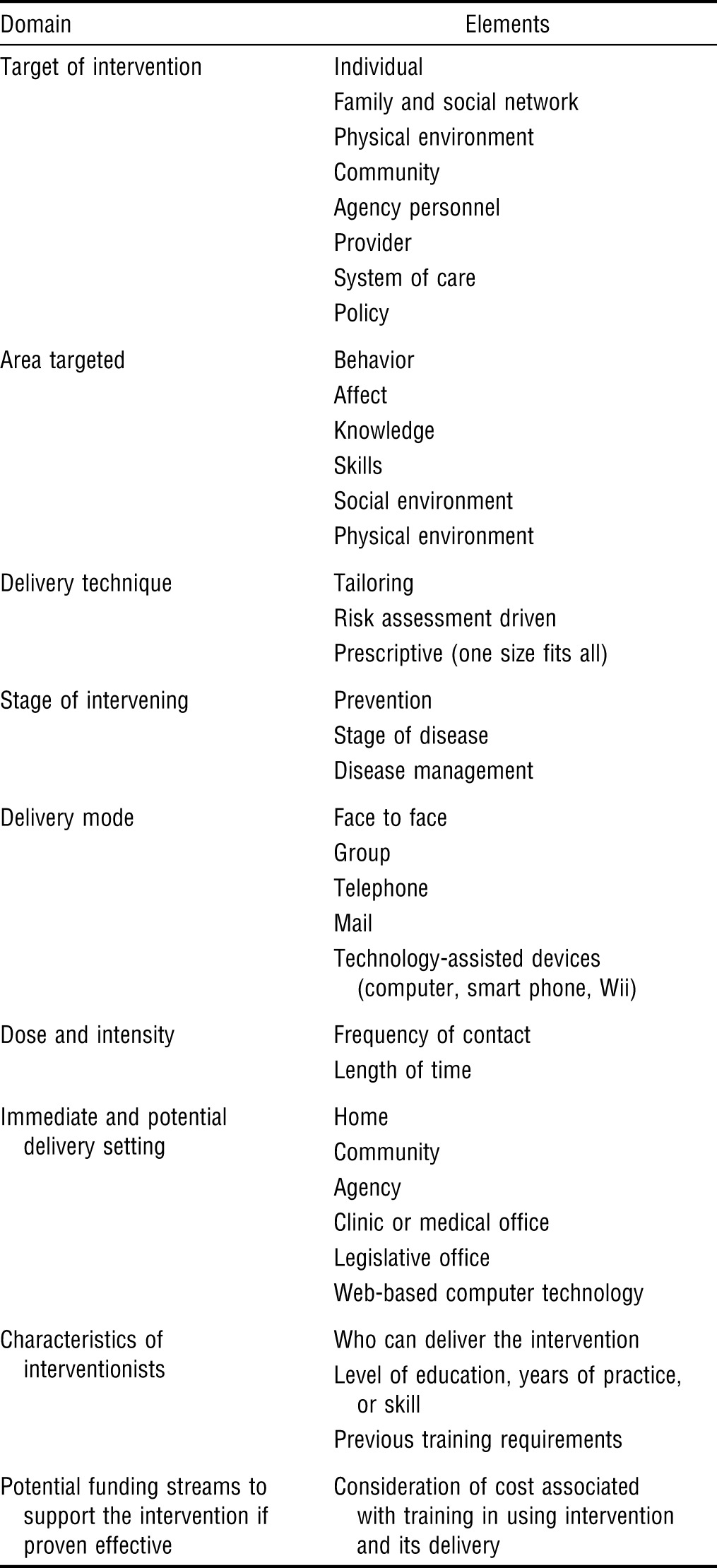Table 1.
Considerations for Designing Behavioral Interventions

| Domain | Elements |
| Target of intervention | Individual |
| Family and social network | |
| Physical environment | |
| Community | |
| Agency personnel | |
| Provider | |
| System of care | |
| Policy | |
| Area targeted | Behavior |
| Affect | |
| Knowledge | |
| Skills | |
| Social environment | |
| Physical environment | |
| Delivery technique | Tailoring |
| Risk assessment driven | |
| Prescriptive (one size fits all) | |
| Stage of intervening | Prevention |
| Stage of disease | |
| Disease management | |
| Delivery mode | Face to face |
| Group | |
| Telephone | |
| Technology-assisted devices (computer, smart phone, Wii) | |
| Dose and intensity | Frequency of contact |
| Length of time | |
| Immediate and potential delivery setting | Home |
| Community | |
| Agency | |
| Clinic or medical office | |
| Legislative office | |
| Web-based computer technology | |
| Characteristics of interventionists | Who can deliver the intervention |
| Level of education, years of practice, or skill | |
| Previous training requirements | |
| Potential funding streams to support the intervention if proven effective | Consideration of cost associated with training in using intervention and its delivery |
